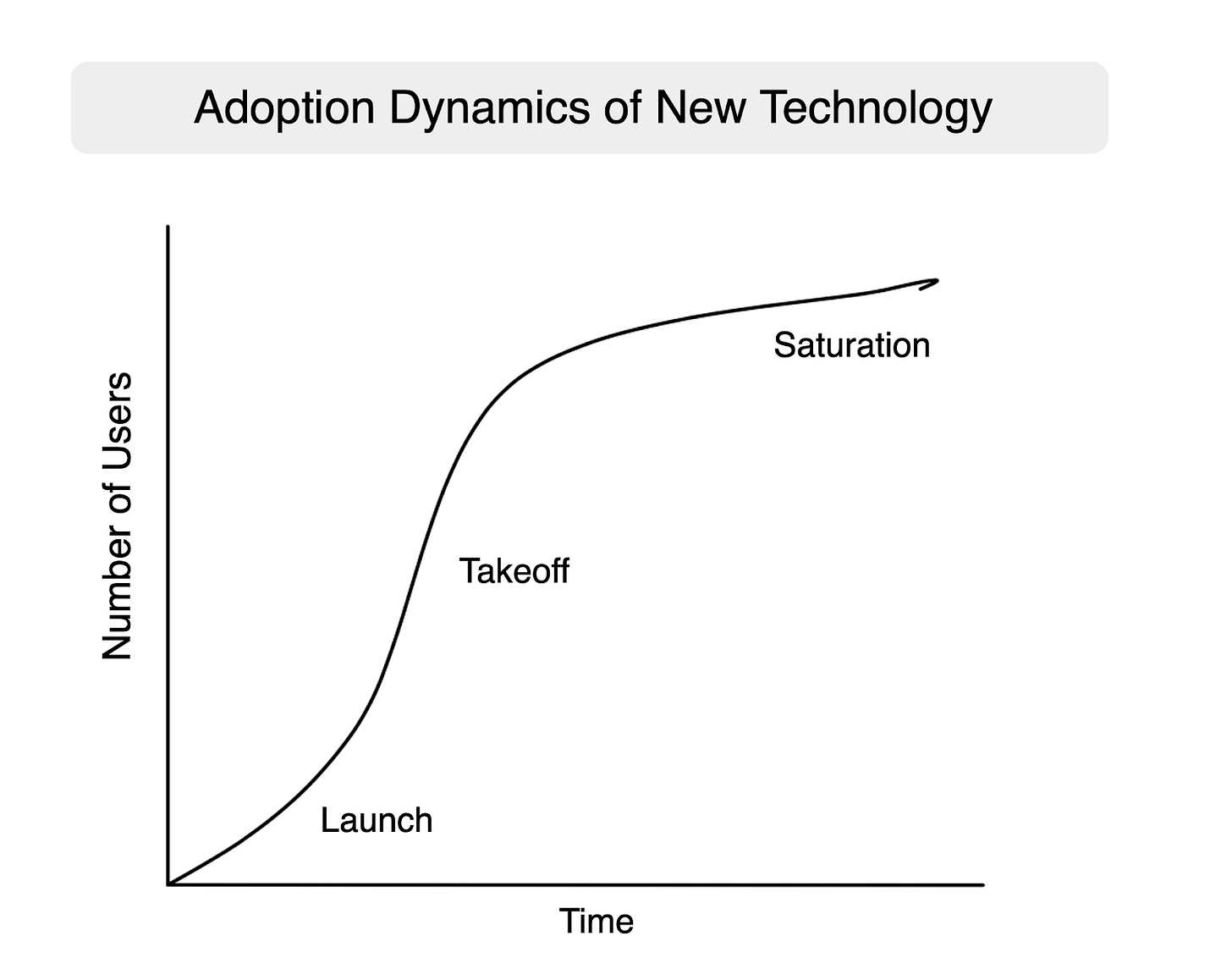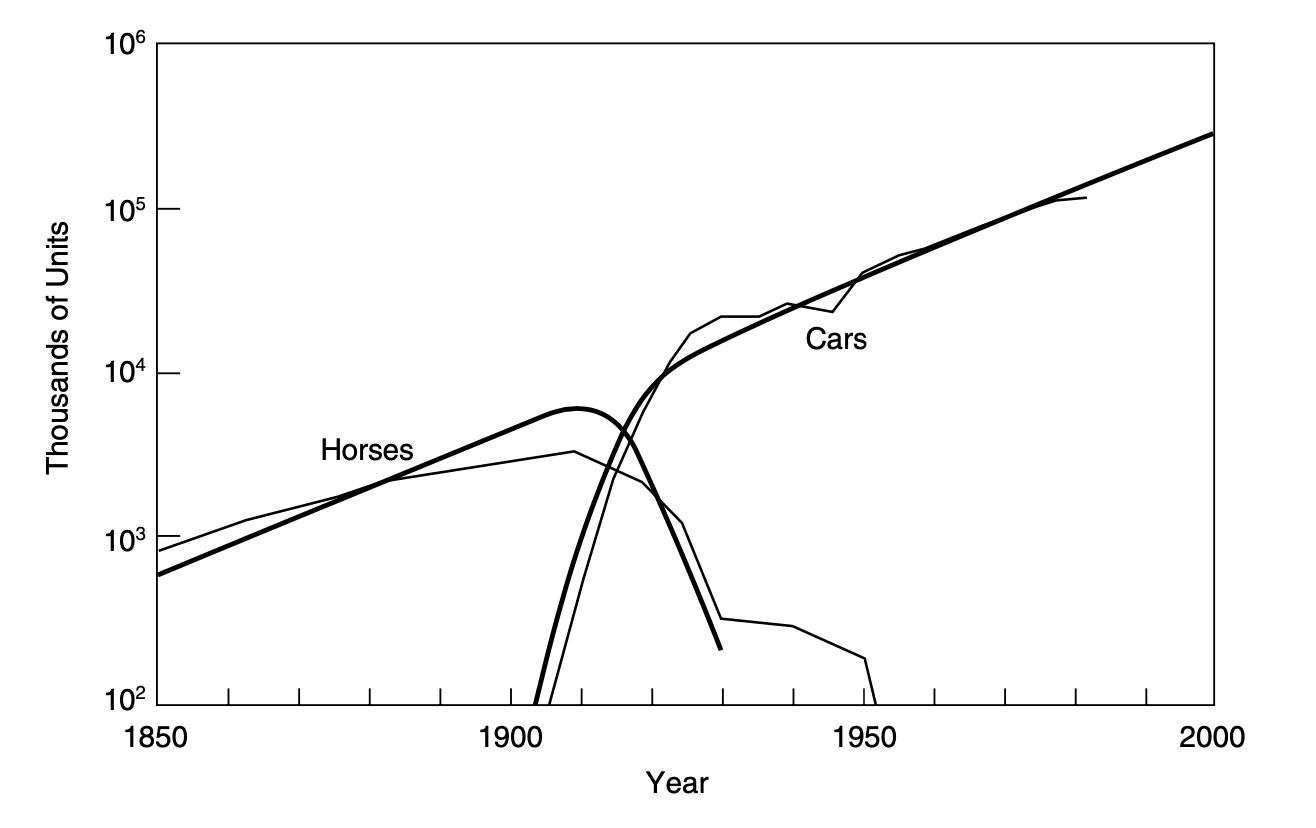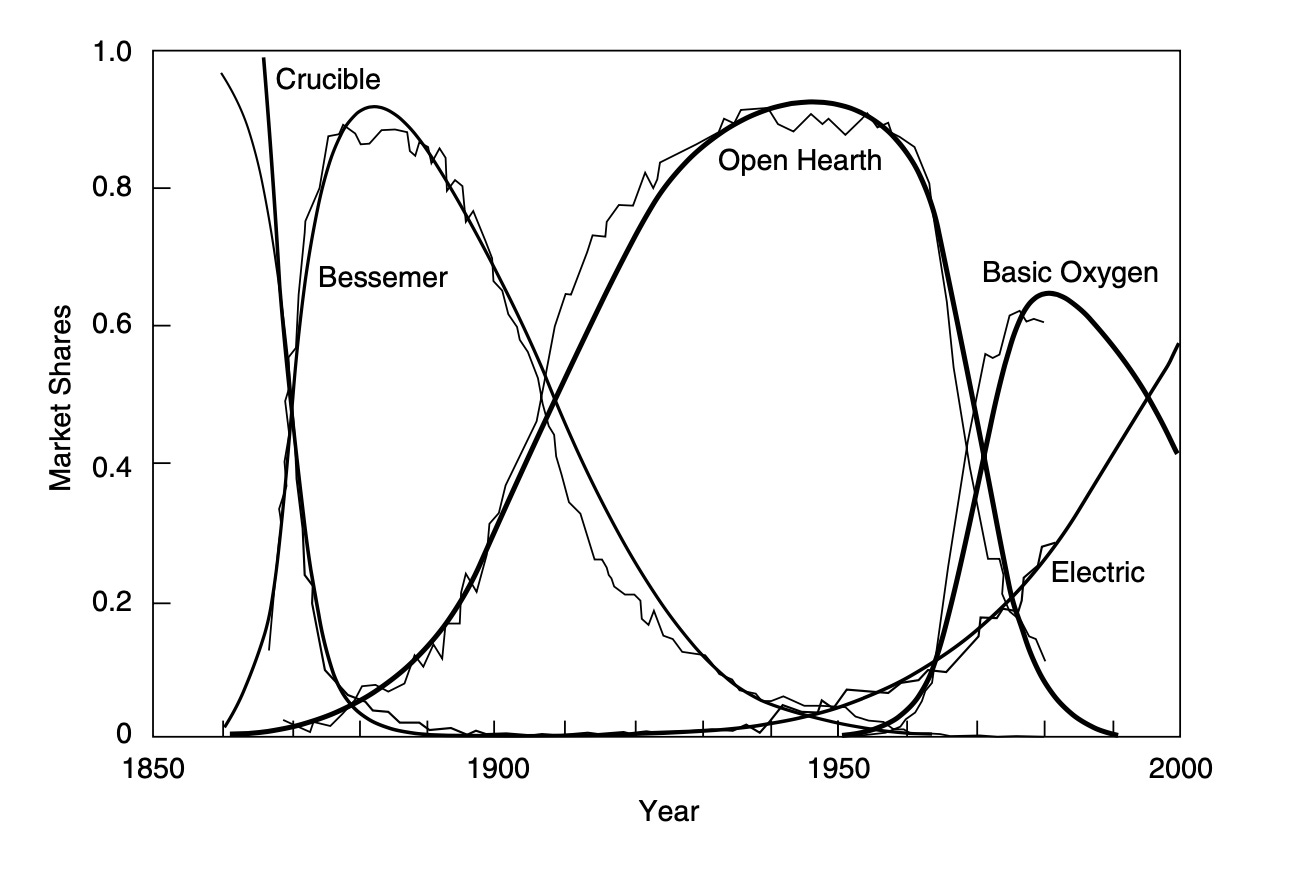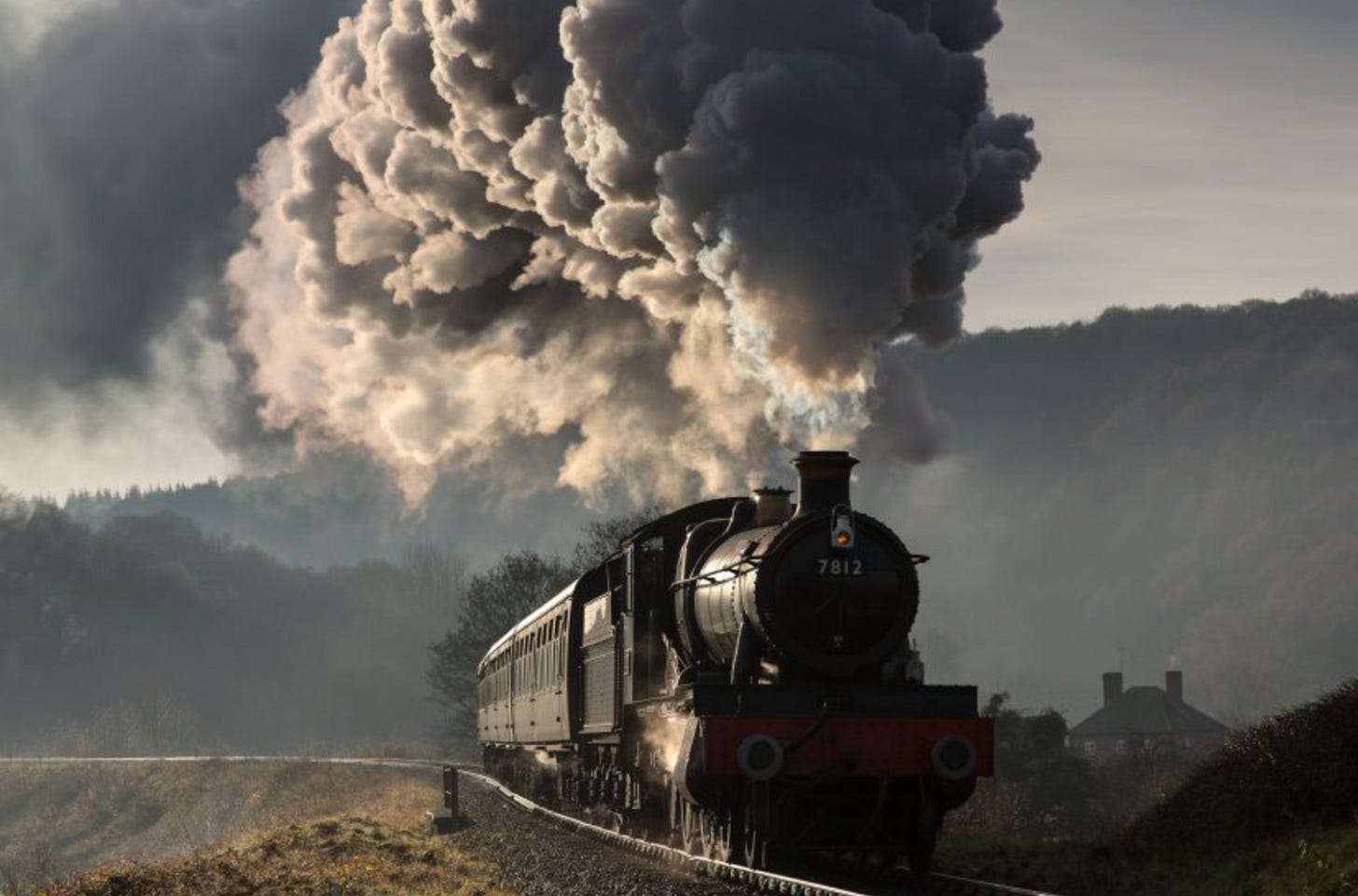Time for a Change: On the Patterns of Technological Transition
From horses to electric cars, from fossil fuels to renewables, from humans to AI. Understand the past to get a clearer vision of the future.
At the beginning of 2024, we are in a crucial phase of technological transition, evidenced by a decade of substantial changes in key sectors such as energy, transportation, healthcare, and biotechnology. This period of technological acceleration has been characterized by overcoming scientific and engineering obstacles, and then facing the challenges of market and commercialization.
For example, the sequencing of the human genome has seen a cost reduction of about ten times compared to a decade ago, dropping below $1,000. This has allowed broader access and more widespread use in areas such as personalized medicine, pharmacogenomics, and the study of hereditary diseases.
In the energy field, the price of solar energy has decreased by four times compared to a decade ago, making electricity generated from the sun consistently cheaper and favoring its wide adoption, accelerating the transition to a more sustainable and low-carbon energy future.
Simultaneously, the cost of lithium-ion batteries has decreased by 97%, fueling the revolution in the electric transportation sector and in energy storage, facilitating the adoption of electric vehicles.
On the biotechnology front, we have witnessed significant progress in gene therapies. Less than a decade after the first successful experiment, there are now about a dozen approved therapies based on CRISPR or CAR-T. These innovations are revolutionizing the treatment of diseases previously considered incurable, such as certain forms of cancer, opening new horizons in the care and treatment of diseases.
This period of technological acceleration is characterized by overcoming scientific and engineering obstacles and moving on to the challenges of market and commercialization.
Innovations in areas such as energy, transportation, biotechnology, advanced materials, and artificial intelligence are rapidly entering the global market. No longer confined to niche sectors, these technologies are becoming pervasive, driven by the need to respond to increasingly pressing environmental, economic, and social challenges.
Positive feedback loops
The dynamics of this expansion are sustained by positive feedback loops, where the increasing effectiveness of technologies fuels demand and stimulates further investments. This translates into greater competition, continuous innovation, and consequent cost reductions of the technology.

For example, considering the transition towards electric vehicles, we observe how the rise in demand has prompted automotive companies to intensify investments, leading to greater innovation and the adoption of more sustainable energy sources.
This example illustrates how changes in one sector can influence broader dynamics, often in unforeseen ways.
Invention, innovation, and diffusion
In terms of technological change, it is crucial to distinguish the stages of invention, innovation, and diffusion.
While invention demonstrates technological feasibility, innovation introduces the idea into the market, and diffusion marks the point at which a technology is adopted on a large scale.
This process is not immediate, generally requiring from 10 to 30 years to evolve from an initial concept to a widespread and mature application, and not all inventions cross the threshold of innovation due to obstacles such as uncertainty or lack of adaptability to the existing context.
Take the case of nuclear reactors: Fermi's reactor in Chicago represented a milestone, demonstrating for the first time the possibility of controlled nuclear fission. This was a crucial step toward innovation, which then materialized with the activation of the Shippingport reactor in Pennsylvania in 1958, marking the beginning of commercial electric power production through nuclear fission. The transition to diffusion solidified over time, with nuclear reactors now providing a significant share of electric power worldwide.
Notably, new solutions do not evolve in isolation but interact with existing practices and technologies. Often, technologies replace or supplant one another, leading to varying degrees of direct competition.
One of the most famous cases of technological substitution is the transition from horses to automobiles. The diffusion of automobiles began by replacing horses and carriages, leading to the rapid disappearance of millions of horses and mules from the roads within three decades. The substitution process lasted twelve years, akin to the diffusion of a modern anti-pollution device, the catalytic converter. This illustrates how technologies interact within specific time frames.

The continuous growth of the automobile population after the initial phase of substitution indicates another dynamic characteristic of technological evolution: expansion beyond the initial scope of application. The use of the car initially grew by replacing horses, creating new markets in the 1930s for long-distance travel and short commutes, leading to the creation of suburbs and increasing the demand for cars.
Dynamics of Technological Substitution
The example of horses being replaced by automobiles is just one of the many instances of technological substitution dynamics that occur in industrial markets.
To understand these phenomena in more detail, let’s examine an emblematic case covering an even broader timeline: the temporal map of technologies in steel production in the United States from 1850 to 2000.

This graph illustrates the evolution of technologies used in steel production in the United States, measured in terms of market shares based on the tons of raw steel produced.
It begins with the era of the crucible furnace, a method of steel processing that dominated until the mid-19th century. This was followed by the Bessemer process, which introduced an era of large-scale steel production, bringing significant improvements in efficiency and cost reduction. This method was then supplanted by the Martin-Siemens furnace, also known as Open Hearth, which constituted the backbone of the steel industry for much of the 20th century.
The progress did not stop there: the final stages of the graph show the transition to the basic oxygen process and finally the use of electric furnaces, with each new technology bringing an increase in market shares, reflecting growing adoption until reaching a new industrial equilibrium.
The graph not only emphasizes the sequence of technological innovations but also reveals how each new technology, with its set of advantages, gradually erodes and then supplants the previous technologies.
A thorough study of these changes provides valuable insights into the driving forces behind technological substitution and the importance of anticipating and adapting to such transitions. It is a testament to the inexorable nature of technological progress and the imperative for industries to continually evolve to avoid falling behind.
Strategy, experimentation, diversification.
Yet, the journey has not been without challenges. Many inventions, despite their ingenuity, never reach the diffusion stage, often due to initial uncertainties or difficulties in adapting to existing regulations and infrastructures.
The non-linearity of technological diffusion is evident in the case of steam railways: Let's consider a historical issue of technological risk and environmental pollution caused by steam railways.

In the early days of railway expansion in the United States, sparks from the smoke of wood-burning steam locomotives posed a significant fire risk to both human settlements and forests.
Inventors and entrepreneurs filed over a thousand patents for "smoke-spark arresters" during the 19th century in a futile search for a solution, which ultimately came not with an add-on technology but with the replacement of steam with diesel and electric locomotives.
This wide spectrum of test and error illustrates that technological success often emerges from a context of diversity and experimentation, where numerous alternatives are explored before arriving at an optimal solution. This demonstrates the importance of an environment that fosters innovation and the ability to adapt to new paradigms.
Furthermore, emerging technologies do not evolve in isolation but interact and sometimes compete with established systems.
These dynamics require flexible strategic approaches to navigate successfully in a technology landscape that is evolving quickly, avoiding uncertainty, and adapting our strategic position without incurring prohibitive costs, leveraging the opportunities that arise during these technological transitions.
Understanding the past for a clearer view ahead.
Understanding recent dynamics is critical for capitalizing on future opportunities and optimizing decision-making processes. As we begin this year, we have concentrated our efforts on creating a targeted analysis to scrutinize key events within the context of the technological and industrial transition of 2023.
Our aim is to establish a robust foundation to prepare for the challenges and opportunities of 2024, providing a clear vision to guide our thinking and actions in the upcoming months. We've adopted a thematic approach, channeling our analysis into 9 key sectors identified through industry report analyses and numerous discussions with expert stakeholders in the Deep Tech world.
This enables us to distill pertinent information, ensuring a focused analysis and practical application of the insights gained. With this theme-oriented perspective, we strive to sketch a clear picture of the most significant trends and developments, serving as a strategic guide for our approach throughout the new year.
To ensure a thorough exploration, we have split our analysis into two parts, which will be published in the upcoming two editions.






